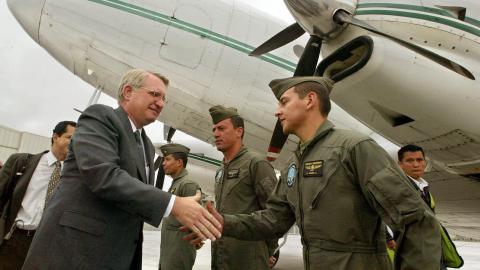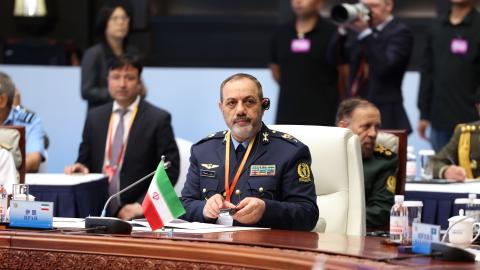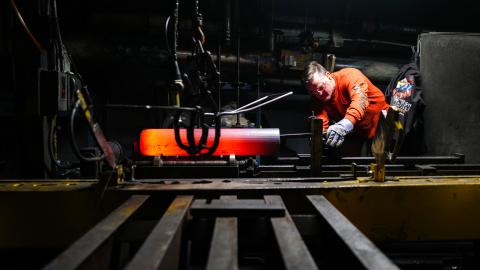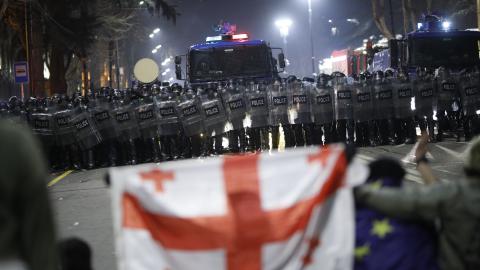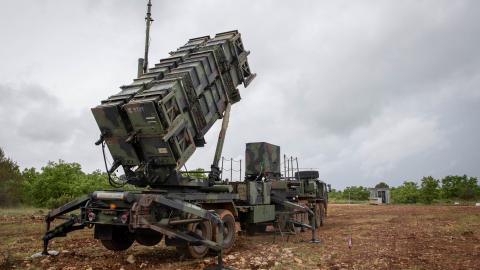“Begin and cease and then again begin,” wrote Matthew Arnold of the tide in his magisterial poem Dover Beach.
The endless tussle between an administration that plans to cut over a trillion dollars from the defense budget before it leaves office and a skeptical Congress parallels Arnold’s comparison of unending human frailty to nature’s eternal movement. The defense budget that the Obama administration submitted to Congress in March—the Navy’s requirement for nearly 1,000 more Tomahawk cruise missiles (TLAM) notwithstanding—eliminated the purchase of the proven missile after Fiscal Year 2015 in favor of a nonexistent cruise missile, one to be designed, built, tested, and deployed at some uncertain date in the future.
But the tide rolled back at the end of April as the House Armed Services subcommittee on Seapower and Projection Forces restored funding to build an additional 96 TLAMs in the years for which the administration planned to end the program. This is a small number. It’s about 60 percent of the 162 TLAMs that President Obama used in March 2011 to support a U.N. no-fly zone and retard Libyan ruler Muammar Qaddafi’s attacks on his own people. And compared to the 288 TLAMs that the Navy launched during the 1991 Gulf War, it is a very small number. To place the number of missiles that the Seapower subcommittee wants to restore to the defense budget in clearer perspective, the 2011 Libyan operation raised to 2000 the number of TLAMs that the U.S. has launched in combat since the missile joined the fleet in 1983. According to former Chief of Naval Operations Admiral Gary Roughead’s estimate at the time of the Libyan operation there exist in the U.S. arsenal 3,000 TLAMs. The Obama administration is betting that this number of missiles will be sufficient until the middle of the next decade—at the soonest. It’s risky.
The world is growing more turbulent. Al Qaeda is alive and well from Syria to Nigeria. In Syria international agreements to destroy Damascus’s chemical weapons are violated; refugees stream out of the country; the killing continues. The region trembles. Iran may choose to build nuclear weapons or balance threateningly on the brink of completing their assembly in a short period of time. Russia defied the West in swallowing Crimea and is maneuvering to take over a portion of Ukraine that will add significantly to its military manufacturing capability. At the same time Moscow is flexing its muscles in the Western Pacific. China is doing the same although with greater concentration, more ships, and the deliberate intent to establish itself as the hegemon of Asia. (At the end of May’s first week, Chinese civilian and military vessels rammed Vietnamese coast guard vessels on the same day that Philippine coastal police stopped Chinese fishing vessels that were operating inside Philippine’s exclusive economic zone.) North Korea’s new ruler had his uncle burned to death with a flamethrower and is now possessed of rocket engines that can propel a ballistic missile to the West Coast of the U.S.
It is as foolish as it is impossible to connect or magnify these global boils into larger conflagrations. The only certainty is that the stability once offered by U.S. leadership is buckling under challenges from all sides—not necessarily to the U.S.—but assuredly to the international order that American policy has advanced and defended for over a century. The world that appears to be emerging will be less stable, less welcoming to commerce on the high seas, less respecting of territorial sovereignty, and far less tolerant in its nationalism. The return of the old world order will bring a darker world, like the violent one that characterized Europe before treaties helped end the medieval and renaissance wars of individual monarchs’ ambition and religion.
The U.S. has yet to decide whether to try to preserve the international order that it created. The Obama administration’s massive defense budget cuts combined with the president’s unwillingness to answer the popular refrain that Americans are war-weary as well as administration foreign policy itself which is more persuasive in speech than action point toward decreasing U.S. influence in the world. But Americans might reconsider as the consequences of turning inwards become clearer, for example NATO’s enfeeblement should it prove irrelevant if Putin attempts to recapitulate his Ukrainian success in the Baltic States.
Tomahawk missiles cannot stop this, nor are they a moat against other gathering international crises. But the sea-launched cruise missiles have been and remain powerful weapons of U.S. force projection. Their depletion, along with the unraveling of the industrial base that knows how to make the missiles, would be a major blow to any president’s ability to threaten or use force as an instrument of American policy.
National security ought not to be a partisan issue. The $82 million for 96 missiles that the House Armed Services Committee authorized is a small but wise investment in preserving manufacturing expertise while adding less than one-tenth the number of Tomahawks that the Navy had originally requested. The Senate will live up to the wisdom associated with age—from which its name is derived—by acting in concert with the House. The U.S. need not be left on “the darkling plain” of which Arnold despaired.


